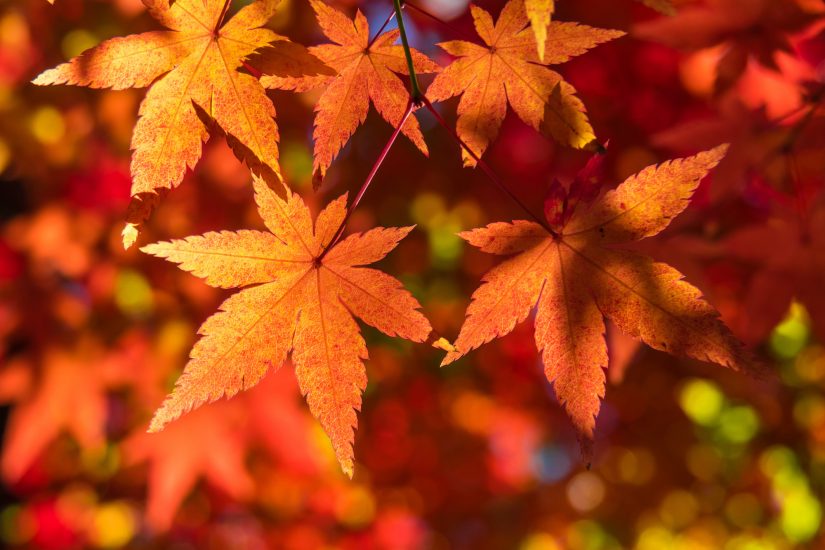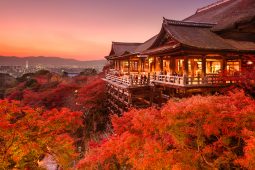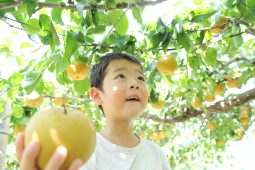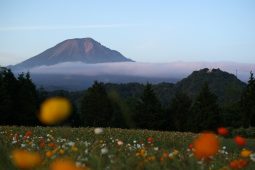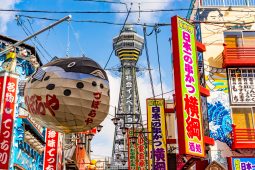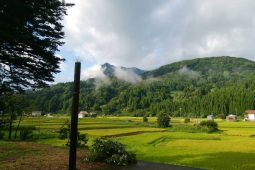If I wrote this ten years ago, most people outside Japan would have (at least in my experience) been under the impression that spring is the only time to go and look at trees, and even then, just the cherry trees. Times have changed and more of Japan is exposed to the world nowadays, so it might not come as a surprise to hear there’s more, but a bit of detail never hurt anybody.
Spring in Japan has quite a bit more going for it than you might expect – plum and peach blossoms as much as cherry – which is just as well because cherry blossom season can get very fickle and you’ll want a backup plan. Now, though, it’s a bit too late in the year to go into that, so let’s go into something a little more seasonally appropriate instead (with a month or two of lead time so you can plan for it!).
Kouyou (or Koyo, there’s never much consensus on this kind of thing), meaning ‘red leaves’, is the blanket term for all colourful autumn foliage. If you’re in Japan in autumn and there are trees about, you’re going to see them turn into some beautiful colours. It’s basically unavoidable, and one of the perks of living in this country – obviously, trees do this in most places, but the exact selection of trees in Japan, together with their sheer density, makes for some unusually beautiful vistas.
Despite the name, red leaves are just a portion of it. The biggest example here is maple trees, locally called momiji, which is sometimes synonymous with autumn foliage itself. Cherry trees, too, turn a surprisingly bright red (something that surprised me when I found out; I’m not going to recognise most leaves on sight).
Here, a little demonstration of what you’ll be seeing:
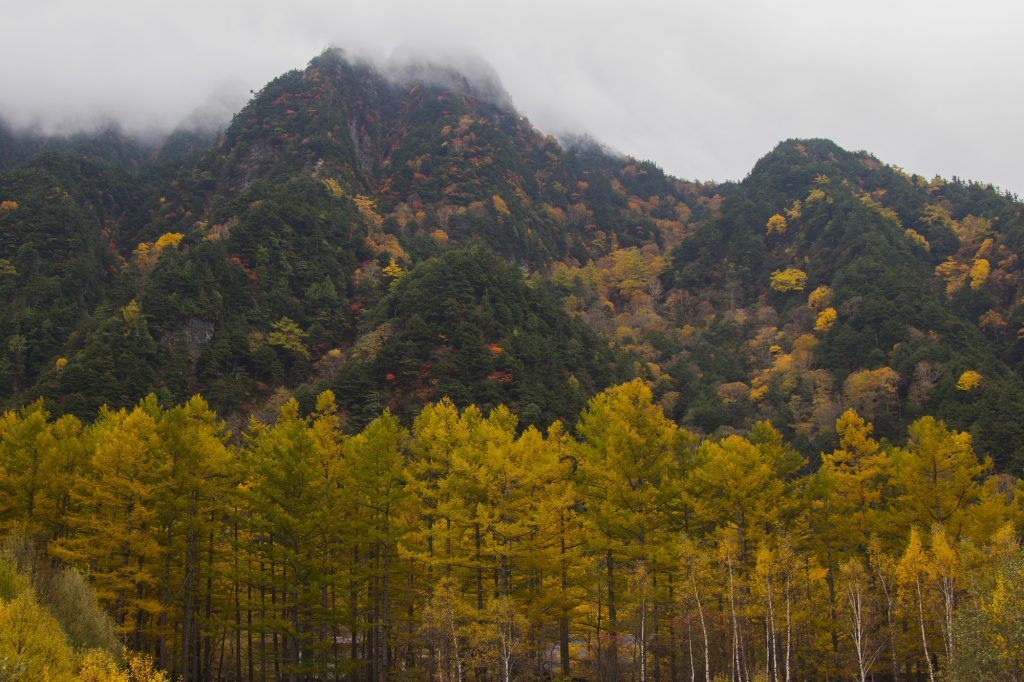
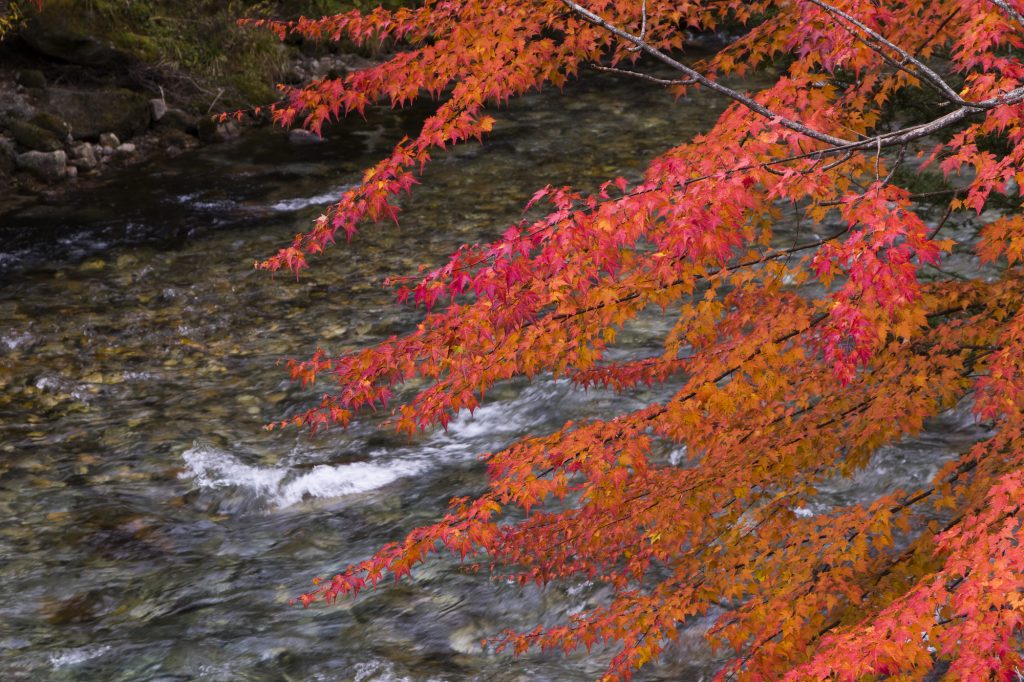
For those of you with an interest in plants, the red ones are mostly maple, Japanese sumac, Japanese rowan, and a handful of others. Yellow leaves come from other maples, poplar, gingko, Japanese elm and more. In practice, you’ll probably see yellow and red leaves, some brown, and even green from pine, wherever you go (as well as some in-between orange ones).
If you don’t have an interest in plants, look at the leaves, they’re very pretty. It’s probably simpler this way.
Unlike, say, cherry blossom season, autumn leaves span a fairly large amount of time. Think of it as a wave that slowly moves south through the country; leaves change colour in the colder parts first. Alternatively, just about any weather or news channel will track this wave, so you should have a good idea of when a spot is at its best. You really do have some leeway though, and I even enjoy the edges a bit: Some brown or green mixed in, for example. Wait too long and you get bright green pine and cedar trees standing in snow, which is also very pretty, but not actually what you came here for.
A lot of my experience in enjoying the local autumn view involves walking around in the mountains, keeping an eye out for bears, and coming back home with a bucket of chestnuts and mountain vegetables. Assuming you’re looking for a slightly less rural experience, you’d do well to look at some recommended spots for it and make a trip there (or find a good mountain waterfall, nothing frames it better). Personally I start from about halfway down top 10 lists and so on for this kind of thing, because I can only deal with so much crowding, but that’s just me.
Just to make a few recommendations, one good spot not far from where I live (well, an hour or two) is Kurobe. A cable car that I have somehow missed for five years in a row will take you up to the top of the mountain, with a beautiful view all around you, both on the way and at the top. It’s a nice enough city too, if you feel like exploring afterwards, and it’s far enough north that you can get there relatively early in the year. By late November, the route closes, but by then there isn’t much to see anyway.
A slightly more exotic option is the Oze Marsh. Get on the plank walkway through the marsh, surrounded by bright red, yellow and orange grass, and walk around taking the view for as long as you like. I’ve had Oze walks that lasted 30 minutes and ones that lasted 7 hours. You can really take as long as you want out there, with how enormous the place is. I’ll leave a more detailed article for another time, but visiting Oze is a good idea anyway; my walk there was in summer, but looking at some of these autumn pictures, I almost wish I chose differently now. Leaves are common, but endless rolling blankets of coloured grass are a much rarer sight.
Just to include a really local option, though, I’m going to bring up Takada Castle. It’s a lovely park, with accompanying castle and moat, even on an ordinary day (set against a city that behaves like a much bigger one – in a good way – than it actually is). The main attraction, other than a historic castle that shockingly hasn’t burned to the ground any time recently (and the moat full of carp) is being absolutely filled with cherry blossom trees that cover the entire park in bright pink and white throughout the cherry festival to spring, with accompanying paper lanterns. This is, generally, what people go there for… but if you remember what I said about red-leafed trees earlier, you probably saw this coming: Wait until early autumn (say, mid to late September?), and the entire park will light up in a beautiful red that fills the trees, covers the ground, and coats the moat as well.
In the end, though, if you want a good autumn treescape, you just have to follow a few steps.
1: Find a mountain*.
2: Did you find one? (Of course you did, Japan barely has flat ground)
3: Go there and have fun! It’s really that simple.
*If you prefer a park, shrine or temple, that will also work wonderfully.


